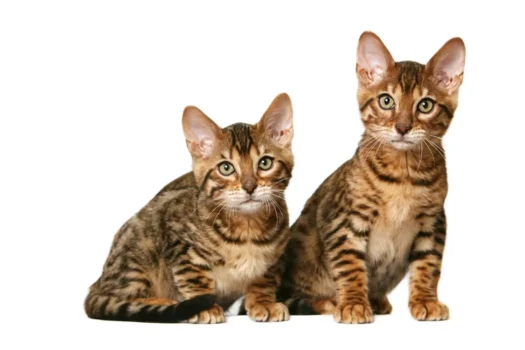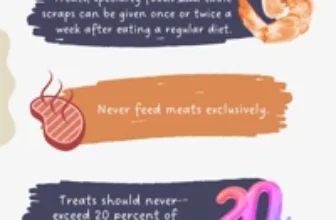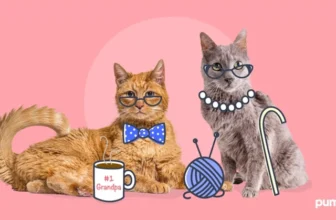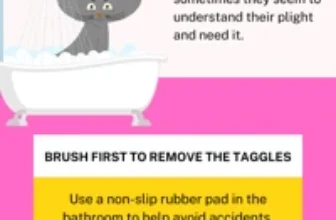Have you been noticing unusual behavior or physical symptoms in your California Spangled Cat lately? It could be possible that your feline friend is suffering from nutritional deficiencies. As a cat owner, it’s crucial to understand the dietary requirements of your pet and the potential consequences if those needs aren’t met. In this article, we’ll cover the common nutritional deficiencies that California Spangled Cats may face, the signs of these deficiencies, tips for prevention, and ways to treat them. Read on to ensure your furry friend is getting all the nutrients they need to live a healthy and happy life.
Nutritional Requirements for California Spangled Cats
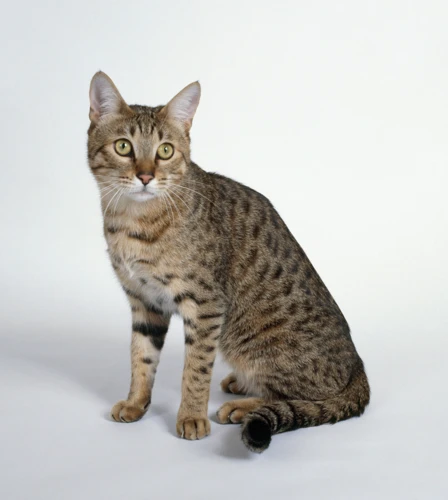
As loving cat owners, we want to ensure that our California Spangled cats get the best possible nutrition to stay healthy and happy. Understanding their nutritional requirements can be perplexing with the abundance of information available online. But with the right balance of protein, fats, carbohydrates, vitamins, minerals, and water, your furry friend can thrive. In this section, we will explore each of these requirements in detail and provide valuable insight into how you can ensure that your California Spangled cat gets the right nutrition and is well taken care of.
Protein
Protein is an essential macronutrient for California spangled cats. They require high levels of protein for developing muscles, repairing tissues, and producing enzymes, among other functions. Amino acids are the building blocks of protein, and not all amino acids are synthesized by cats, which means they must get them from their diet.
The ideal protein percentage for a California spangled cat diet should be between 25% to 35%. Here are some food sources of protein that can be included in your cat’s diet:
| Food | Protein Content (g/100g) |
|---|---|
| Chicken Breast (cooked) | 31 g |
| Turkey (cooked) | 29 g |
| Beef (cooked) | 26 g |
| Lamb (cooked) | 25 g |
| Salmon (cooked) | 25 g |
| Tuna (canned in water) | 26 g |
| Egg (cooked) | 13 g |
| Cottage Cheese | 12 g |
It’s important to note that the quality of protein is equally important as the quantity. The protein in cat food must come from animal sources as plant-based protein is not as easily digestible for cats. Purchasing high-quality cat food is an easy way to ensure that your California spangled cat is getting enough high-quality protein in their diet.
If you’re considering making homemade cat food to meet your cat’s nutritional requirements, speak to a veterinary nutritionist to ensure the diet is balanced and meets your cat’s needs. You can read more about the importance of a balanced diet for California spangled cats to promote overall health and prevent nutritional deficiencies.
Fats
Adequate consumption of fats is crucial for California Spangled Cats to maintain a healthy lifestyle. Fats provide a source of energy for the body, aid in the absorption of certain vitamins and minerals, and help in regulating body temperature. However, it is important to note that not all fats are created equal. There are different types of fats, including saturated, unsaturated, and trans fats. It is critical to monitor the types and amounts of fats that are included in your cat’s diet to prevent nutritional deficiencies.
Saturated Fats:
Saturated fats are typically solid at room temperature and are commonly found in animal-based products such as meat and dairy. While small amounts of saturated fats are permissible, excessive intake can lead to health issues such as heart disease and obesity. It is recommended to limit saturated fats in your cat’s diet.
Unsaturated Fats:
Unsaturated fats are typically liquid at room temperature and can be found in plants, nuts, and certain types of fish. Unlike saturated fats, unsaturated fats are considered healthy and are recommended in moderate amounts.
Omega-3 and omega-6 fatty acids are examples of unsaturated fats, and they play a crucial role in maintaining proper brain and eye function, as well as reducing inflammation.
Trans Fats:
Trans fats are typically found in processed foods such as margarine, baked goods, and fried foods. Consumption of high amounts of trans fats can increase the risk of heart disease and other health issues. It is crucial to avoid feeding your California Spangled Cat any food with trans fats.
It is essential to ensure that the cat food you purchase for your California Spangled Cat contains sufficient amounts of healthy fats. When reading food labels, check for the type and amount of fat content present in the food. A diet that is low in fat can lead to poor skin and coat health, as well as inadequate absorption of certain fat-soluble vitamins. However, excessive intake can be harmful.
Including the right amount and type of fat is crucial in maintaining your California Spangled Cat’s health. Be mindful of the type of fat present in the food and aim for moderate intake of unsaturated fats. Read food labels carefully, and choose high-quality cat foods that contain the recommended amounts of healthy fats. If you choose to prepare homemade cat food, be sure to consult with a veterinarian to ensure that your recipe is meeting your cat’s nutritional requirements. For more information on California Spangled Cat nutrition, visit /cali-spangled-nutrition/.
Carbohydrates
Carbohydrates are an important part of a California spangled cat’s diet, but it’s important to note that cats are obligate carnivores, meaning they get most of their necessary nutrients from animal products. It’s recommended that carbohydrates make up no more than 10% of a cat’s diet. However, some carbohydrates can be beneficial in small amounts.
Benefits of Carbohydrates
Carbohydrates provide a source of energy for cats and can also aid in digestion. They can also be used to provide additional fiber in a cat’s diet, which can help with constipation or diarrhea.
Types of Carbohydrates
There are two types of carbohydrates: simple and complex. Simple carbohydrates are made up of one or two sugar molecules, such as glucose or fructose, and are found in fruit and honey. Complex carbohydrates, on the other hand, are made up of long chains of sugar molecules and are found in grains and vegetables.
Carbohydrates in Commercial Cat Food
Many commercial cat foods contain carbohydrates, and it’s important to read the labels to ensure that they’re not making up too much of your cat’s diet. Look for labels that list a source of protein, such as chicken or salmon, as the first ingredient and avoid those that list grains or fillers as the primary ingredient. Carbohydrates in commercial cat food typically come from sources such as rice, corn, or potatoes.
Carbohydrates in Homemade Cat Food
For those who prefer to make their own cat food, it’s important to note that carbohydrates should still only make up a small portion of the diet. Homemade cat food can be beneficial in that you have control over the ingredients, but it’s important to ensure that the diet is well-balanced and includes all necessary nutrients. Consider speaking with a veterinarian or animal nutritionist before making the switch to homemade cat food.
Conclusion
Carbohydrates can be a helpful addition to a California spangled cat’s diet if they’re included in moderation. It’s important to read labels and choose high-quality commercial cat food or consult with a professional before switching to homemade cat food. Incorporating carbohydrates properly can benefit your cat’s overall health and aid with digestion. For more information about making cat food at home, weighing the pros and cons and supplementing vitamins and supplements, read our article about homemade cat food pros and cons.
Common Nutritional Deficiencies
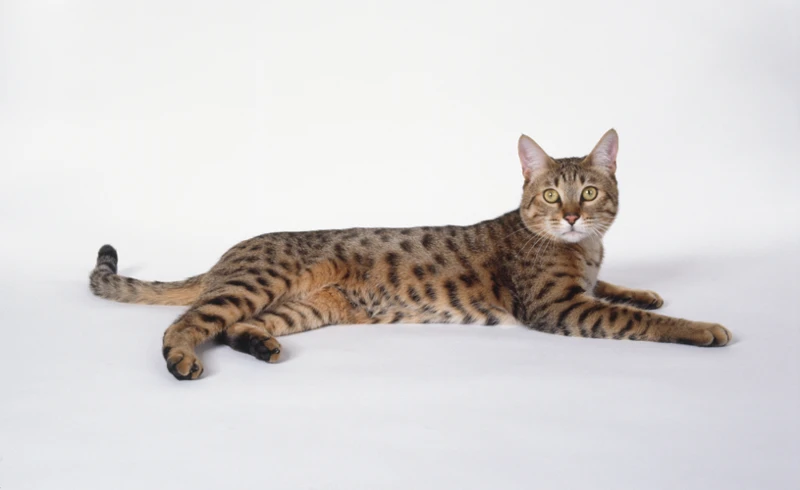
As with any living creature, California Spangled cats require a balanced diet to maintain optimal health. Unfortunately, even with the best intentions, it can be difficult for cat owners to ensure their feline friends are receiving all the necessary nutrients. In this section, we will explore some of the most common nutritional deficiencies that California Spangled cats can experience. By understanding these deficiencies, you can take appropriate preventative measures and seek treatment if needed.
Taurine Deficiency
Taurine is an essential amino acid that plays an important role in maintaining the health and well-being of California Spangled cats. Taurine is necessary for vision, heart function, and reproductive health.
A deficiency in taurine can lead to a variety of health issues for your cat. Some of the most common signs of taurine deficiency in California Spangled cats include loss of appetite, dehydration, lethargy, and cardiovascular abnormalities.
Taurine deficiency can also lead to retinal degeneration, which can cause blindness in your cat. This is a serious condition that can be prevented by ensuring that your cat gets an adequate amount of taurine in their diet.
To prevent taurine deficiency, it is important to choose a high-quality commercial cat food that contains adequate levels of taurine. Look for cat food labels that list taurine as an ingredient. Alternatively, you can consider adding a taurine supplement to your cat’s diet. For more information on supplements, check out our article on California Spangled Cat Vitamins and Supplements.
If you prefer to feed your California Spangled cat a raw food diet, it is important to ensure that the diet is balanced and contains all the necessary nutrients, including taurine. For more information on raw food diets, see our article on Raw Food Diet vs. Commercial Cat Food for California Spangled Cats.
If your California Spangled cat is diagnosed with taurine deficiency, treatment typically involves adding taurine supplements to your cat’s diet. It is important to work with your veterinarian to determine the appropriate dosage and duration of treatment.
Taurine is an essential nutrient for California Spangled cats. A deficiency in taurine can cause a variety of health issues, including blindness. To prevent taurine deficiency, it is important to choose a high-quality cat food that contains adequate levels of taurine, or consider adding a taurine supplement to your cat’s diet.
Vitamin A Deficiency
One of the most important vitamins for California Spangled cats is Vitamin A. Vitamin A plays a vital role in maintaining good vision, healthy skin, and a robust immune system. A deficiency in this vitamin can lead to a wide range of health problems. Some of the most common signs of Vitamin A deficiency include poor coat quality, night blindness, dry eyes, and infections.
It’s important to note that cats are not capable of producing Vitamin A on their own, so they must obtain it through their diet. Unfortunately, Vitamin A deficiency is relatively common in cats that are not fed a complete and balanced diet. There are several reasons for this, including poor quality cat food, an imbalanced homemade diet, or simply not consuming enough Vitamin A-rich food.
To prevent Vitamin A deficiency, it’s important to make sure that your California Spangled cat is consuming enough Vitamin A in their diet. Foods that are high in Vitamin A include liver, fatty fish, and eggs. Many high-quality cat foods also contain adequate amounts of Vitamin A.
If you suspect that your California Spangled cat is suffering from a Vitamin A deficiency, it’s essential to consult with your veterinarian to get a proper diagnosis. Treatment may involve adding Vitamin A supplements to your cat’s diet or switching to a higher quality cat food that contains more Vitamin A.
Make sure to read cat food labels carefully, looking for ingredients that will provide your cat with the essential vitamins and nutrients that they need to maintain good health. You can learn more about reading cat food labels for California Spangled cats in our comprehensive guide: Cat Food Labels for California Spangled Cats.
Vitamin B12 Deficiency
Vitamin B12 is essential for the production of red blood cells, DNA synthesis, and neurological function in cats. California Spangled Cats require sufficient amounts of Vitamin B12 in their diet to maintain good overall health and prevent Vitamin B12 deficiency.
Symptoms of Vitamin B12 Deficiency
The symptoms of Vitamin B12 deficiency in California Spangled Cats may vary, but some common signs include fatigue, loss of appetite, weight loss, and vomiting. Cats with Vitamin B12 deficiency may also develop anemia, which can cause pale gums, rapid heart rate, and weakness.
Causes of Vitamin B12 Deficiency
Vitamin B12 deficiency in California Spangled Cats can occur due to several reasons, including inadequate intake of Vitamin B12 in their diet, poor absorption of Vitamin B12 in the digestive system, and certain medical conditions that affect the absorption of nutrients.
Treatment of Vitamin B12 Deficiency
If your California Spangled Cat is diagnosed with Vitamin B12 deficiency, your veterinarian may recommend a Vitamin B12 injection or supplements. The amount and frequency of the supplements or injections will depend on the severity of the deficiency. You may need to change your cat’s diet to include more sources of Vitamin B12, such as fortified cat foods or raw or cooked meat.
Here’s a table that shows the recommended daily intake of Vitamin B12 for cats based on their weight:
| Cat Weight | Vitamin B12 Daily Intake |
|---|---|
| 5 lbs | 0.7-1.5 mcg |
| 10 lbs | 1.2-2.5 mcg |
| 15 lbs | 1.8-3.8 mcg |
It’s important to note that while Vitamin B12 deficiency can have serious health consequences for California Spangled Cats, it is rare in well-nourished cats that are fed a balanced and nutritious diet. By ensuring that your cat’s diet meets their nutritional requirements, you can help prevent Vitamin B12 deficiency and other nutritional deficiencies.
Calcium Deficiency
Calcium is an essential mineral that helps to build strong bones, muscles, and teeth in California Spangled cats. Calcium deficiency can lead to a number of health problems, including osteoporosis and muscle weakness. Some of the common signs of a calcium deficiency include lethargy, convulsions, and muscle tremors.
If your California Spangled cat is experiencing calcium deficiency, there are several options for treatment. One option is to supplement their diet with calcium-rich foods, such as dairy products or leafy greens. Another option is to give them a calcium supplement, which can help to restore their calcium levels to normal.
To prevent calcium deficiency, it is important to ensure that your California Spangled cat is getting enough calcium in their diet. This can be achieved by feeding them a high-quality commercial cat food that is specifically formulated for their nutritional needs. Additionally, you can offer them small amounts of calcium-rich foods as treats, such as cheese or canned fish.
If you suspect that your California Spangled cat is experiencing a calcium deficiency, it is important to take them to the vet for evaluation. Your vet can run tests to determine if your cat’s calcium levels are too low and recommend an appropriate treatment plan. With proper care and attention, you can help to prevent calcium deficiency in your California Spangled cat and ensure that they stay healthy and strong.
Here are some calcium-rich foods that you can offer your California Spangled cat:
- Low-fat cheese
- Yogurt
- Sardines
- Salmon
- Tuna
- Broccoli
- Kale
- Canned pumpkin
Phosphorus Deficiency
Phosphorus is an essential mineral that is critical for strong bones and teeth, nerve function, and energy production in the body of a California Spangled Cat. The recommended daily amount of phosphorus for a cat is approximately 0.6% to 1% of their diet. If your cat doesn’t get enough phosphorus, they may develop a phosphorus deficiency, which can lead to several health issues.
Causes of Phosphorus Deficiency:
– Lack of phosphorus in the diet
– Poor absorption of phosphorus
– Chronic kidney disease
– Excessive intake of calcium or vitamin D
Signs of Phosphorus Deficiency:
– Loss of appetite
– Muscle weakness
– Stiffness and joint pain
– Reduced bone density
– Poor growth in kittens
– Difficulty walking or standing
Phosphorus deficiency can lead to a serious condition in cats called hypophosphatemia, which is characterized by low levels of phosphorus in the blood. This can cause weakness, seizures, and even lead to coma in severe cases.
Prevention and Treatment of Phosphorus Deficiency:
To prevent phosphorus deficiency, it’s important to feed your California Spangled Cat a well-balanced diet that includes adequate amounts of phosphorus. High-quality commercial cat food usually contains the right amount of phosphorus, but low-quality or homemade diets may be deficient.
If your cat is diagnosed with a phosphorus deficiency, your veterinarian may recommend a phosphorus supplement or a change in their diet. However, it’s important to follow your vet’s advice and not give your cat any supplements without their approval, as too much phosphorus can also cause health problems.
Phosphorus is an essential nutrient for California Spangled Cats, and a deficiency can lead to several health issues. By providing your cat with a well-balanced diet that meets their nutritional needs, you can help them stay healthy and thrive. If you suspect your cat may have a phosphorus deficiency, consult with your veterinarian for proper diagnosis and treatment.
Water
Water is an essential nutrient for all living creatures, including California Spangled Cats, and its deficiency can lead to a variety of health issues. Inadequate water intake can lead to dehydration, which can cause serious health problems. Cats require fresh and clean water regularly to maintain their hydration levels.
Why is sufficient water intake necessary for California Spangled Cats?
- Water is necessary to remove toxins from the body and keep the kidneys functioning properly.
- It helps regulate body temperature and maintain normal organ function.
- Water is essential for digestion and helps prevent constipation.
- It ensures proper circulation of nutrients and oxygen throughout the body.
- Water is also important in the production of urine, which is crucial for getting rid of excess minerals and waste products in the body.
What are the signs of water deficiency?
- Loss of skin elasticity
- Dry mouth, nose, and eyes
- Lethargy and decreased energy levels
- Decreased appetite and weight loss
How to ensure your California Spangled Cat is getting enough water?
- Provide clean and fresh water in a bowl that is accessible all day.
- Consider providing a water fountain to encourage them to drink more.
- Offer food that has a high moisture content, such as wet cat food.
- Avoid feeding them a dry food-only diet, as it can decrease their water intake
California Spangled Cats are susceptible to dehydration, and it is important to ensure they have access to clean and fresh water at all times. Regular hydration can prevent urinary tract infections and other serious health concerns. Watch out for signs of dehydration and take necessary precautions to keep your cat healthy.
Signs of Nutritional Deficiencies
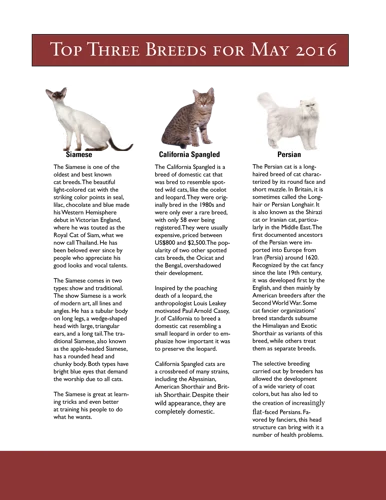
As a responsible pet owner, it’s important to be aware of the signs that your California Spangled cat may be experiencing nutritional deficiencies. Lack of appropriate nutrients can have physical and behavioral symptoms that can have long-term effects on their health. Keep an eye out for any unusual behavior or physical changes in your cat, as this may be a sign that their diet is lacking in certain essential nutrients. Let’s take a closer look at what to watch out for.
Physical Symptoms
Nutritional deficiencies can cause a myriad of physical symptoms in California Spangled Cats. Some of the most common physical symptoms include:
- Coat and Skin Issues – Cats with nutritional deficiencies may develop a dull coat or dry, flaky skin. In some cases, they may experience hair loss or develop sores on their skin.
- Weight Changes – Nutritional deficiencies can cause cats to lose or gain weight, depending on the type of deficiency. Taurine deficiency, for example, can cause cats to lose weight, while calcium deficiency can lead to weight gain.
- Sluggishness – Cats with nutritional deficiencies may become lethargic and lack energy. They may not be as active as they once were and may spend a lot of time sleeping.
- Weakness – Cats with nutritional deficiencies may experience weakness in their muscles and may have trouble moving around. They may lack the stamina to jump or climb as they normally would.
- Digestive Issues – Nutritional deficiencies can cause digestive issues such as vomiting, diarrhea, or constipation. Cats may also experience a loss of appetite or have trouble eating.
- Dental Problems – Certain nutritional deficiencies, such as a lack of calcium or vitamin D, can lead to dental issues like weak teeth or gums that easily bleed.
It’s important to note that these physical symptoms can also be indicative of other health problems, so it’s important to talk to a veterinarian if you notice any changes in your California Spangled Cat’s appearance or behavior. With proper diagnosis and treatment, nutritional deficiencies can often be reversed and your cat can return to optimal health.
Behavioral Symptoms
Nutritional deficiencies in California Spangled Cats not only affect their physical health but also their behavior and well-being. Some common behavioral symptoms of nutritional deficiencies in cats are:
- Lethargy: Cats with nutritional deficiencies tend to be less active and show less interest in physical activities such as playing, running, or jumping. They may seem lethargic and sleep more than usual.
- Aggression: Nutritional deficiencies can also cause aggression in California Spangled Cats. They may become easily irritated, agitated, or aggressive towards their owners or other pets in the household.
- Depression: Just like humans, cats can also experience feelings of sadness or depression. Nutritional deficiencies can cause cats to become depressed, lose interest in daily activities, and withdraw from their owners or other pets in the household.
- Pica: Cats with nutritional deficiencies may develop pica, a condition in which they crave and eat non-food items such as dirt, paper, or plastic. This behavior can further worsen their deficiencies and lead to gastrointestinal problems.
- Excessive grooming: Cats may excessively groom themselves when they suffer from nutritional deficiencies. This can lead to hair loss, skin problems, and other health issues if left untreated.
- Change in appetite: Nutritional deficiencies can cause California Spangled Cats to have a decreased or increased appetite. They may either stop eating or start eating much more than usual in an attempt to compensate for the lack of nutrients.
- Urinary abnormalities: Cats with nutritional deficiencies may experience urinary problems such as frequent urination, urinary tract infections, or difficulty urinating. This can be a sign of a more serious health issue and needs to be addressed by a veterinarian.
It is important for pet owners to pay attention to their cats’ behavior and seek veterinary care if they suspect a nutritional deficiency. Proper nutrition is essential for the overall health and well-being of California Spangled Cats.
Prevention of Nutritional Deficiencies
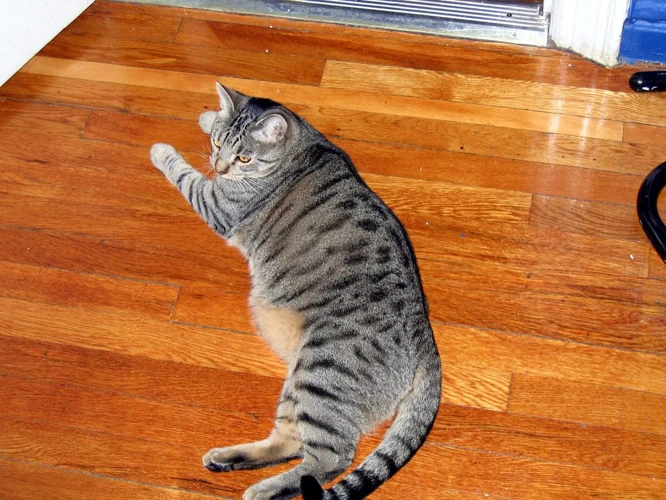
Ensuring your California Spangled cat has the proper nutrition is essential for maintaining their overall health and well-being. While treating nutritional deficiencies is possible, preventing them is always the better option. Fortunately, there are several steps you can take to prevent your cat from developing common nutritional deficiencies. By being proactive in your cat’s nutrition, you can help them live a long and healthy life. Here are some practical ways to prevent nutritional deficiencies in your California Spangled cat:
Choosing the Right Cat Food
When it comes to preventing nutritional deficiencies in your California Spangled cat, choosing the right cat food is crucial. Here are some factors to consider when selecting cat food:
- Quality: Look for cat foods with high-quality ingredients, including whole meat sources as the first ingredient. Avoid foods that list by-products, fillers, or artificial additives.
- Age and Life Stage: Choose a cat food that is appropriate for your cat’s age and life stage. Different formulas are designed for kittens, adults, and senior cats.
- Brand Reputation: Research the brand’s reputation before purchasing cat food. Look for brands that prioritize nutrition and follow strict quality control standards.
- Special Dietary Needs: If your cat has specific dietary requirements, such as grain-free or hypoallergenic food, make sure to choose food that meets those needs.
- Nutrient Profile: Check the nutrient profile on the cat food label to make sure it meets the guidelines for a complete and balanced diet for cats. Nutrients to look for include protein, fat, carbohydrates, vitamins, and minerals.
- Cost: While high-quality cat food can be more expensive, it is worth investing in to prevent nutritional deficiencies in your cat. Choose the best food you can afford within your budget.
By taking the time to choose high-quality cat food that meets your California Spangled cat’s nutritional needs, you can help prevent common deficiencies and ensure your cat lives a healthy, happy life.
At-Home Diets
Providing your California Spangled Cat with a balanced diet is crucial to ensuring they receive all the necessary nutrients they need to stay healthy. While commercial cat food is a convenient option, some pet owners prefer to prepare a homemade diet for their feline friend. Before starting an at-home diet, it’s important to consult with a veterinarian or a feline nutritionist to ensure that the diet meets your cat’s nutritional needs.
Benefits of At-Home Diets: At-home diets can provide a range of benefits for your cat, including:
- Avoiding additives and preservatives found in some commercial cat foods
- Control over the quality and freshness of ingredients
- The ability to tailor the diet to your cat’s specific nutritional needs and preferences
Challenges of At-Home Diets: While there are benefits to at-home diets, there are also challenges to consider, such as:
- The time and effort required to properly prepare and store homemade cat food
- The potential for nutritional imbalances if the diet is not properly balanced and monitored
- The need for careful attention to food safety to avoid contamination or foodborne illness
Key Nutrients to Consider: When preparing an at-home diet for your California Spangled Cat, it’s important to ensure they receive all the necessary nutrients for optimal health. Key nutrients to consider include:
| Nutrient | Sources |
|---|---|
| Protein | Meat, poultry, fish, eggs, dairy, legumes |
| Fats | Meat, fish, eggs, oils, butter, cheese |
| Carbohydrates | Whole grains, vegetables, fruits |
| Taurine | Meat, fish, shellfish |
| Vitamin A | Liver, eggs, dairy, vegetables |
| Vitamin B12 | Meat, fish, eggs, dairy |
| Calcium | Dairy, canned fish, bone meal, supplements |
| Phosphorus | Meat, fish, eggs, dairy, legumes |
| Water | Clean drinking water, wet cat food |
Supplementation: It’s important to note that certain nutrients, such as taurine and vitamin A, are only found in animal-based sources and may be difficult to obtain through a plant-based or vegetarian diet. In these cases, supplementation may be necessary to prevent deficiencies.
The Bottom Line: While at-home diets can offer benefits for your California Spangled Cat, it’s important to carefully consider the challenges and potential risks before making the switch from commercial cat food. Consult with a veterinarian or feline nutritionist to ensure that the diet is properly balanced, and monitor your cat’s health and well-being closely.
Treating Nutritional Deficiencies
Ensuring that California Spangled Cats receive proper nutrition is essential for their health and well-being. Despite our best efforts, nutritional deficiencies can still occur. If you suspect that your cat is experiencing a deficiency, it’s important to take action right away. In this section, we will discuss ways to treat nutritional deficiencies in California Spangled Cats. From taurine deficiency to calcium deficiency, we will cover each type of deficiency and outline the treatment options available. So, let’s dive into the world of treating nutritional deficiencies and help your furry friend get back to optimal health!
Taurine Deficiency Treatment
Taurine deficiency is a serious issue that requires immediate attention. Fortunately, once diagnosed, it is easily treated. Here are some steps to help treat taurine deficiency in California Spangled Cats:
- Supplement with Taurine: The first step in treating taurine deficiency is to supplement your cat’s diet with taurine. You can do this by purchasing an over-the-counter taurine supplement or by feeding your cat a taurine-rich diet. Some common food sources that are high in taurine include chicken, turkey, and beef.
- Vet Monitoring: In addition to supplementing with taurine, it is important to have your cat regularly monitored by a veterinarian to ensure they are getting the appropriate amount of taurine. Your veterinarian may recommend a specific taurine supplement or a specific diet to help address your cat’s individual needs.
- Follow Through: It is important to be consistent with supplementing and monitoring your cat’s taurine levels. Follow through with your veterinarian’s recommendations and stick to a taurine-rich diet to ensure your cat’s health and well-being.
Remember, taurine deficiency can have serious consequences if left untreated, so it’s important to act quickly if you suspect your California Spangled Cat is suffering from this nutritional deficiency.
Vitamin A Deficiency Treatment
When it comes to treating Vitamin A deficiency in California Spangled cats, it is important to take immediate action to avoid any permanent damage. The treatment for a Vitamin A deficiency typically involves supplementing the cat’s diet with Vitamin A-rich foods and/or a Vitamin A supplement. However, it is important to note that high Vitamin A intake can also be toxic to cats, so it is crucial to consult with a veterinarian for the correct dosage.
One way to increase Vitamin A intake is through the use of dietary supplements. Supplements specifically formulated for cats can be found at most pet stores and come in various forms such as liquids, powders, and chews. It is important to choose supplements that are free from harmful additives and chemicals.
Another way to treat Vitamin A deficiency is by altering the cat’s diet to include foods that are rich in this essential nutrient. This can include adding in liver, carrots, sweet potatoes, and leafy greens to their current diet. It is important to introduce new foods slowly and in small amounts to prevent an upset stomach.
Table: Foods Rich in Vitamin A for California Spangled Cats
| Food | Vitamin A content (IU/100g) |
|---|---|
| Beef liver | 16,898 |
| Carrots | 10,190 |
| Sweet potatoes (cooked) | 14,187 |
| Spinach (cooked) | 9434 |
It is important to note that while Vitamin A deficiency is a serious issue, over-supplementing can also lead to health problems. It is important to follow the instructions of a veterinarian and not self-diagnose or self-treat the cat’s deficiency. With proper treatment, however, the cat should recover well and regain their health and vitality.
Vitamin B12 Deficiency Treatment
Vitamin B12 plays a crucial role in various functions of the body of California Spangled Cats, including the formation of red blood cells, maintenance of healthy nerve cells, and DNA synthesis. A deficiency in this vitamin can cause serious health problems if not diagnosed and treated in a timely manner.
Diagnosis: A vet may perform a blood test to confirm Vitamin B12 deficiency in cats.
Treatment: Treatment for Vitamin B12 Deficiency in California Spangled Cats is typically done through injections, supplements, or dietary changes. The exact treatment will depend on the severity of the deficiency and its underlying cause.
One treatment option is to administer regular Vitamin B12 injections. This may involve weekly or biweekly injections for several weeks or months, depending on the severity of the deficiency. As the Vitamin B12 levels increase, the frequency of injections may be reduced.
Supplements can also help treat Vitamin B12 deficiency in California Spangled Cats. These can be given in the form of tablets or liquids added to their food. However, it’s important to consult with a Veterinarian before starting any supplement regimen, as too much Vitamin B12 can be harmful.
Dietary changes can also help treat Vitamin B12 deficiency in California Spangled Cats. A diet that contains sufficient amounts of this vitamin can help prevent and treat deficiencies. Foods rich in Vitamin B12 include beef, liver, fish, and poultry. It is recommended to feed cats with a balanced diet of high-quality cat food that contains all the necessary nutrients, like Vitamin B12.
Vitamin B12 Deficiency is a serious condition that can cause various health problems in California Spangled Cats. Early diagnosis and treatment are critical to prevent complications. Treatment can involve Vitamin B12 injections, supplements, or dietary changes. It’s important to consult with a Veterinarian to determine the best treatment plan for your cat.
Calcium and Phosphorus Deficiency Treatment
Calcium and phosphorus are two incredibly important minerals that are crucial for maintaining the health of a California Spangled Cat. Without enough calcium and phosphorus, cats may experience a range of symptoms such as lethargy, muscle weakness, and brittle bones. If you suspect that your cat is deficient in either calcium or phosphorus, you must take quick action to address the issue. There are several treatments available for calcium and phosphorus deficiencies, including:
| Treatment | Description |
|---|---|
| Supplements | If your cat is deficient in calcium or phosphorus, supplements are an effective way to restore balance to their system. These supplements come in various forms, such as tablets, chews, powders, or liquids. However, it’s important to note that calcium and phosphorus must be given in the right amount and ratio, as too much can be just as detrimental as too little. It’s crucial to follow the dosing instructions provided by your veterinarian or on the supplement label. |
| Dietary Changes | One of the best ways to treat calcium and phosphorus deficiencies is to provide your California Spangled Cat with a well-balanced diet that meets their specific needs. Look for high-quality cat food that contains adequate amounts of calcium and phosphorus, as well as other essential nutrients. However, it’s important to note that homemade diets or unbalanced commercial diets can be risky and lead to more serious nutritional deficiencies. It’s crucial to consult with your veterinarian before making any significant dietary changes. |
| IV Fluids | In severe cases, where calcium and phosphorus levels have fallen dangerously low, a cat may require hospitalization and IV fluids to restore their mineral balance quickly. This is especially necessary if your cat has underlying health conditions that make them more susceptible to deficiencies or if they have not been eating properly for an extended period. |
To prevent calcium and phosphorus deficiencies, it’s important to provide your California Spangled Cat with a well-balanced diet that meets all their nutritional needs. Additionally, regular visits to the veterinarian can help ensure that your cat is healthy and that any deficiencies are caught early on. By taking these steps, you can help your cat lead a long and healthy life.
Water Deficiency Treatment
When it comes to a water deficiency in California Spangled Cats, treatment involves increasing the amount of water in their diet. Some options to ensure proper hydration include:
- Adding water to their food: If your cat is not drinking enough water, you can try adding water to their dry food to ensure they are getting enough fluids.
- Switching to wet food: Wet food has a higher moisture content than dry food, so it can help keep your cat hydrated. Consider adding wet food to your cat’s diet or switching to a wet food entirely.
- Providing fresh water: Make sure your cat always has access to fresh, clean water. Consider providing multiple water sources, such as a water fountain or multiple bowls, to encourage your cat to drink more.
It is important to address a water deficiency quickly, as dehydration can lead to serious health issues such as kidney problems. If you suspect your cat may not be getting enough water, consult with your veterinarian for further guidance on how to ensure your cat stays hydrated and healthy.
Conclusion
After discussing the nutritional requirements and common deficiencies in California Spangled cats, it’s clear that a balanced and nutrient-rich diet is crucial for the health and wellbeing of our feline friends. As responsible cat owners, it’s our duty to ensure that our pets receive a complete and balanced diet that meets their nutritional needs.
By choosing a high-quality cat food that is specifically formulated for California Spangled cats and consulting with a veterinarian, we can help prevent nutritional deficiencies and ensure our cats are healthy and happy. If a deficiency is suspected, it’s important to seek veterinary care and follow the appropriate treatment plan.
Overall, ensuring a proper diet and monitoring our cat’s health is important in maintaining their overall wellbeing. With proper nutrition, we can help our California Spangled cats live their best lives.
Frequently Asked Questions
What are the nutritional requirements for California Spangled cats?
California Spangled cats require a balanced diet that includes protein, fats, and carbohydrates.
What is the importance of protein in a California Spangled cat’s diet?
Protein is essential for building and repairing tissues, maintaining a healthy coat and skin, and supporting the immune system.
Why are fats important for California Spangled cats?
Fats provide energy, support the immune system, and help absorb fat-soluble vitamins.
What role do carbohydrates play in a California Spangled cat’s diet?
Carbohydrates provide energy and fiber, which helps maintain digestive health.
What is taurine deficiency?
Taurine is an essential amino acid for cats that supports heart and eye health. Without enough taurine in their diet, cats can develop serious health problems.
What are the symptoms of vitamin A deficiency?
Vitamin A deficiency can cause corneal ulcers, respiratory infections, and skin issues in cats.
Why is vitamin B12 important for California Spangled cats?
Vitamin B12 helps maintain a healthy nervous system, supports the immune system, and aids in the production of red blood cells in cats.
What are the signs of calcium deficiency?
Calcium deficiency can cause weakened bones, muscle tremors, and seizures in cats.
What is the importance of phosphorus in a California Spangled cat’s diet?
Phosphorus is necessary for bone health, energy production, and maintaining a healthy pH balance in the body.
How can nutritional deficiencies be prevented?
Choosing a high-quality cat food that meets the nutritional requirements of California Spangled cats is the best way to prevent nutritional deficiencies.

